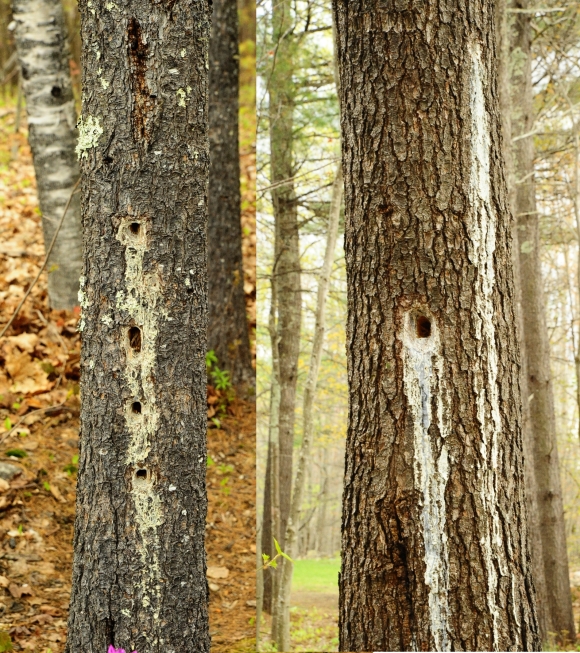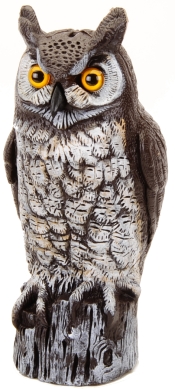Living in Maine is a lot like being Oliver Wendell Douglas on the old TV show “Green Acres”. Everyone who lives here understands one another, traditions and situation, and my wife adjusted to the same very quickly. However, after nearly twenty years of Maine, I’m still playing catch up and viewed by the locals as “that weird guy from California”. I am still baffled by the cast of characters that find their way up our rural driveway and I am baffled by the diverse wildlife that surrounds us. As an example, my wife and I were headed out to an area on the property where we can shoot firearms safely, without bringing out the neighbors with pitchforks and torches… although I don’t suppose they would have torches in the middle of the day. In any event, I was walking out to the area when someone laid down what sounded like 50 caliber covering or suppressive fire; long bursts interrupted by short pauses. I dove for cover behind a stout old growth tree, pulling my startled wife to the ground with me, where we were promptly covered in a blanket of falling sawdust.

Apparently, Maine is woodpecker Nirvana as there are nine woodpecker species living amongst us. The birds range in size from the downy woodpecker; seven inches long with a one foot wingspan to the guy pictured above, the pileated woodpecker and animated pileated; both twenty inches long/tall with a three foot wingspan. No, they do not like to eat trees, they just happen to love the carpenter ants, larva, berries and seeds that live in them. Woodpeckers find ant colonies in trees by hearing the ants and other insects gnawing away beneath the bark and by drumming for hollow spots like my new buddy was doing. Once they locate an insect enriched hollow spot or subterranean bark feasting.going on, they hammer away until the they get to their target. I know, “How much damage can a bird do to a very large tree”?

Above is the work of one or more pileated woodpeckers that return for a broadened menu as they feed on original source and, now, insects that get stuck in the running tree sap. I’m a guy, therefore I live to solve problems, so I rolled over on my hip, drew my 357 Mag and raised its sights to cover the immediate problem.That’s when I heard a really shrill sound, which turned out to be my wife advising me that it is illegal to kill a woodpecker in Maine. Actually, it was more like, “What are you doing? You are such a knuckle head? Yadda, Yadda…” or something very close. So we went back home and researched. Yes, “researched” is a euphemism for Google search.
 We read that placing a realistic, artificial owl and aluminum foil strips in the immediate area of evidenced avian – dendrological carnage would frighten the woodpeckers away. My wife thought this was a great solution. I thought, since we found the information on the Internet, the material was probably written by a guy with a man bun, who worked in a computer lab and based his conclusions on Discovery Channel programming. So we bought a hootie owl and aluminum foil streamers and strategically placed them at the range site.
We read that placing a realistic, artificial owl and aluminum foil strips in the immediate area of evidenced avian – dendrological carnage would frighten the woodpeckers away. My wife thought this was a great solution. I thought, since we found the information on the Internet, the material was probably written by a guy with a man bun, who worked in a computer lab and based his conclusions on Discovery Channel programming. So we bought a hootie owl and aluminum foil streamers and strategically placed them at the range site.
Late afternoon, when my wife was out food shopping, I mixed ten parts sugar to one part boric acid and filled several jar tops with the substance. Then I placed the caps at the foot of trees exhibiting ant and woodpecker damage. Within two days or so, no more ants and no more woodpeckers. It goes like this – Scout ants eat the boric acid mix because they like the sugar. They carry a stomach full of the stuff back to the nest and regurgitate it as snacks for the whole nest and, within 48 hours, they all croak. The woodpecker sees a great opportunity in this stationary meal, chows down on the Boric acid laden ants, get an upset stomach as the dose will not kill them, and post a critical review on Yelp so they all stay away. What about the hootie owl? Hard to say. Maybe it was the owl and not the Borgia like treatment that drove them away, but the owl was found lying on its side, still affixed to the tree stump with a hole pecked in its head. Which seemed a lot like gang retaliation. Who says I do not understand sensitive environmental dynamics?

Email Notification